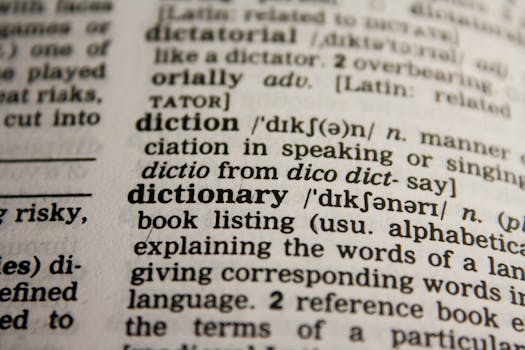When applying for a U.S. visa, green card, or citizenship, submitting the right documents is only part of the job. If any of your documents are written in a language other than English, USCIS requires them to be translated accurately—and following their specific rules.
Submitting incorrect or non-compliant translations can lead to delays, rejections, or Requests for Evidence (RFEs). This guide explains how to translate foreign documents for a USCIS application, who can do the translation, what the certification must include, and how to avoid common mistakes.
Does USCIS Require Translations?
Yes. USCIS requires a certified English translation of any foreign-language document submitted as part of an immigration application or petition.
This applies to:
- Birth certificates
- Marriage and divorce certificates
- Police and court records
- Death certificates
- Adoption records
- Academic diplomas or transcripts
- Medical records (in some cases)
Even if a document contains just one paragraph in another language, it must be translated entirely, including seals, stamps, and official markings.
USCIS Translation Requirements
According to 8 CFR 103.2(b)(3), any document written in a foreign language must be accompanied by:
“A full English translation which the translator has certified as complete and accurate, and by the translator’s certification that he or she is competent to translate from the foreign language into English.”
This means:
- Every part of the document must be translated—including signatures, stamps, and headers
- The translation must be certified
- The translator must affirm they are competent
USCIS does not require a notary or a professional translation service, but the certification must meet specific formatting and language expectations.
Who Can Translate the Documents?
Anyone who is fluent in both English and the foreign language can translate your documents—except the applicant or petitioner themselves. You cannot translate your own documents.
Eligible translators include:
- A bilingual friend, colleague, or community member (not the applicant)
- Professional freelance translators
- Certified translation services or agencies
While you’re not required to use a certified translator, using one can help avoid mistakes—especially if you’re dealing with complex or official documents like legal or medical records.
What Should a Certified Translation Look Like?
The translation should include:
- The full translated document in English
- The translator’s certification statement
- The translator’s name, signature, and date
- Contact information (in most cases)
Sample USCIS Translator Certification:
I, [Full Name], certify that I am fluent in English and [Foreign Language], and that the attached translation is a complete and accurate translation of the original document written in [Foreign Language].
Signature: _______________________
Name: [Full Name]
Date: [Month/Day/Year]
Phone/Email: [Optional but recommended]
The certification can appear on a separate page or at the end of the translation.
Tips for Accurate Translation
- ✅ Translate all visible content, including headings, notes, stamps, seals, and handwritten annotations
- ✅ Preserve formatting as much as possible (tables, columns, margins)
- ✅ Use consistent terminology—especially for legal or religious references
- ✅ Avoid summaries—USCIS wants complete, literal translations
- ✅ Proofread carefully for spelling and grammar errors in English
For names and places, use consistent transliteration (e.g., “Aleksandr” vs. “Alexander”) across all documents.
Common Mistakes That Can Delay Your Case
- ❌ Submitting translations without a certification statement
- ❌ Forgetting to translate seals, watermarks, or annotations
- ❌ Including only partial translations or summaries
- ❌ Using machine translations (e.g., Google Translate) without human review
- ❌ Translating your own documents
If your translation is missing key components, USCIS may send you a Request for Evidence (RFE), delaying your case by weeks or months.
Real-World Example: Avoiding a Costly RFE
Samira, originally from Morocco, applied for a marriage-based green card and submitted her birth certificate with a translated version her cousin helped prepare. Unfortunately, they forgot to translate two stamps at the bottom of the page. USCIS issued an RFE, asking for a new certified translation. It delayed her case by three months and cost her an additional $200 to correct.
A professional review before submission could have avoided the delay entirely.
Where to Find Certified Translation Services
If you prefer a professional option, many online companies offer USCIS-compliant translations with fast turnaround.
Popular services include:
- Rev.com
- RushTranslate
- GTS Translation
- Day Translations
Expect to pay $20–$50 per page. Many offer same-day delivery and include the proper certification.
Always verify that the provider guarantees USCIS compliance and provides editable or digital copies you can submit with your application.
FAQs: Translating Documents for USCIS
Q1: Can I translate my own birth certificate?
No. USCIS does not allow applicants to translate their own documents—even if fluent.
Q2: Do translations need to be notarized?
No. Notarization is not required by USCIS. Certification is enough.
Q3: What if only part of the document is in another language?
You must translate the entire document, even if only one section is foreign-language.
Q4: Can I submit translations by email or PDF?
Yes, as long as they’re printed and submitted with your physical application or uploaded through an official USCIS portal (if applicable).
Q5: Do I need to translate documents from countries that issue dual-language certificates?
If the document includes both English and the foreign language, and the English portion is complete and legible, no separate translation is required.
Final Thoughts: Get It Right the First Time
Translating foreign documents for a USCIS application might seem like a small step—but it carries real weight. A missing or sloppy translation can delay or derail your application. A clean, accurate, and certified translation, on the other hand, keeps your case moving smoothly.
Whether you use a professional service or a trusted translator, make sure your paperwork meets USCIS standards before you file. When it comes to immigration, precision matters—and it starts with the words on the page.



